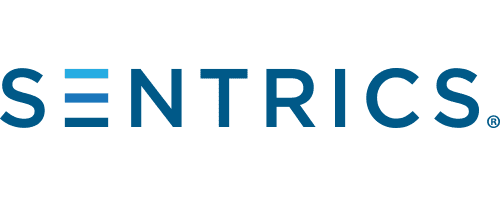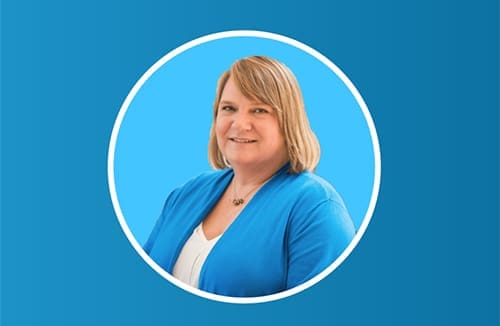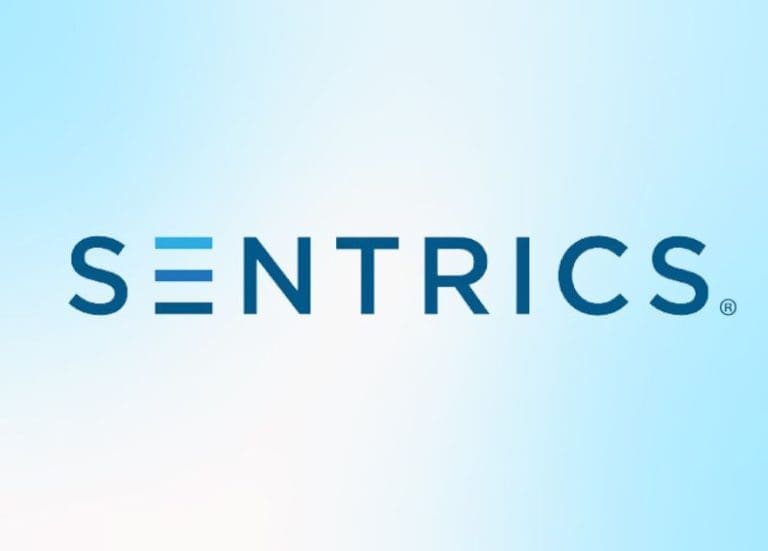Building Patient Trust and Engagement through Health Equity Initiatives
When it comes to health inequities, the data is undeniable. But simply acknowledging the presence of disparities is not enough, says Kellie Goodson, MS, CPXP, of Goodson Professional Services LLC. Healthcare providers must understand the reasons behind them, and put interventions in place to eliminate disparities.
Kellie is a leading national voice in the areas of health equity and patient and family engagement (PFE). She has worked with multiple health systems to incorporate health disparities identification and resolution and PFE strategies into their quality improvement plans, and is a founding member of Sentrics E3’s Patient and Family Advisory Council. She recently spoke about health equity at the HIMSS22 Conference.
In a recent interview with Sentrics, here’s what Kellie had to say about how providers begin solving the health equity challenge.
Sentrics: First of all, what is “health equity”?
Goodson: Health equity has been defined by many prominent organizations but ultimately it is a goal of ensuring that everyone has a fair opportunity to be as healthy as possible, and that means removing barriers that get in the way of people being healthy.
For instance, I know of one health system that works with its Muslim population during Ramadan to adjust their medications so they can practice their religion and still stay healthy. That’s a great example of a health equity strategy. Another example I can think of is how a pharmacist worked with a patient newly diagnosed with diabetes who was afraid of needles and whose work schedule didn’t allow for a safe space for insulin injections. The pharmacist switched the patient to weekly injections and oral medication so that he could be successful with his medication regiment.
This spring, the American Hospital Association announced its Health Equity Roadmap to guide hospitals in removing inequities, and CMS recently launched its Centers for Medicare & Medicaid Services (CMS) Equity Plan for Improving Quality in Medicare. What is driving all the attention on health equity?
Goodson: COVID-19 is the driver behind the spotlight on health equity. It was the first national event where federal, state and local governments reported data disaggregated by patient demographics such as race, ethnicity, age, etc. Before that, data wasn’t publicized in this way because we in healthcare aggregated data to report it to the regulatory bodies. The news stories we saw with COVID came because the disaggregated data was reported.
That’s not to say that disparities are just now happening, though. They have been around for a very long time. We have reports of disparities going back to the 1980s and earlier but they didn’t come into the national consciousness until COVID-19. In fact, the Agency for Healthcare Research and Quality has reported annually since 2003 on the existence of health disparities in the US, but that information was not well-known even among frontline clinicians. This is not something that has been taught in medical schools or healthcare administration programs until recently.
Health disparities also didn’t get much attention in the past due to our payment system; providers and health systems were paid for volume and aggregated outcomes. It’s only when you begin to pay for value, meaning paying for the quality of care provided to all patients, that disaggregating patient data becomes important.
What do we mean by “data disaggregation”
Goodson: Data disaggregation is a multi-step process to examine differences in health outcomes by various patient populations. This process identifies groups of people experiencing worse care or outcomes than other populations. Once you can identify groups of patients with the worse outcomes, you can use quality improvement tools and processes to improve their care. Doing so has been shown to improve care and outcomes for all patients.
Would you expect that we will begin to see changes in how payment systems work, now that we have this more granular data?
Goodson: Yes. Some commercial payers are starting to ask for data disaggregated by patient demographics because that shows the true quality of the care provided. The Centers for Medicare & Medicaid Services (CMS) is starting to ask about it too.
CMS’ value-based purchasing program was a start and has helped some, but we need additional ways to encourage providers to be more granular in analyzing their data. The gold standard of how a hospital should look at their data is Rush University Medical System. Their health equity report is publicly available online, and is exactly what every hospital should be doing.
Do you think there’s also some carryover with what is going on in our world generally around diversity, equity, inclusion & belonging (DEI&B)?
Goodson: Absolutely. Healthcare has all of the issues of DEI&B found in any industry, but then we have the added issue of health equity and how it impacts patient outcomes. So not only does the healthcare industry have to focus on the issue with its own workforce but also with its customers.
What does the data show about how health inequities impact different patient demographic groups?
Goodson: The Center for American Progress has a fact sheet that lists the most common disparities that have been found. For example, it found that 12.6% of Black children have asthma compared to 7.7% of White children. The worst health disparity is in maternal and infant mortality. Black mothers experience 11 infant deaths per 1,000, almost twice the national average for infant deaths among White mothers. Chronic illnesses disproportionately affect marginalized people and are now being associated with chronic stress. So, when you think about the stress that comes with living in unsafe neighborhoods, below the poverty line, or not knowing where you next meal is coming from, those kinds of stressors are affecting people’s health.
In its Equity Plan, CMS acknowledges “the challenge of patient and family engagement in a new value-focused health paradigm.” Given the diversity of patient populations that we see, and the shortage of nurses nationwide, how can hospitals creatively and realistically begin to overcome these and other challenges, and engage patients more fully in their care?
Goodson: One of those ways is through technology. We can engage with patients and their families before they come to the hospital through technology. We can engage them after they are discharged with remote patient monitoring. We can use patient portals to send messages and to track patient activity.
But those are just tools, and while we can use those effectively, there’s still the need for the human connection to really get someone engaged in their care. It is a huge challenge especially with the nursing shortage, but everyone should be working at the top of their license. I think we need to give more credit to techs and nursing assistants and receptionists, to other people who are part of the care team and can pitch in and help solidify those relationships with patients. It’s important to leverage the tools of technology, as well as the human capital of relationships that can happen when we engage in the healthcare system.
What about those patients who lack access to the technology?
Goodson: We have to strategically deploy our resources. For people who can interact with the portal and patient monitoring, we need to push those tools to as many as can handle them. Then there’s the next layer of people who have access to the technology, but don’t know how to use it. And then there is the layer of people who don’t have access. That’s when we need to intervene personally, make a phone call, spend more time and resources on them on the front end to make sure they understand their care and have access to you with a simple phone call.
Part of that relationship-building is making sure they know who will be calling them, so they will answer the phone. I worked with a hospital who found that certain patient populations weren’t getting the hospital’s post-discharge follow-up calls. They started having the case manager talk with the patient before they were discharged to let them know, I will be calling you from this number so please pick up the phone. The hospital saw a big improvement in health outcomes from that effort.
What do you say to those who contend that the health equity problem is much bigger than just to be borne on the shoulders of hospitals, that it’s not just hospitals’ job to improve health equity?
Goodson: Yes, it is a big problem, but there are definitely things hospitals can do. I tell the hospitals that I work with there’s plenty to work on within their four walls. Do you stratify your outcomes data by race, by ethnicity, language, gender, age? Do you know which of your patients have the worst outcomes for any given diagnosis? Once you know that, then you can see if there’s an equity issue or not. And armed with that knowledge, you can create improvements to your processes and systems that then can be scaled to apply to all of your patients.
Health equity is fueled by health literacy, and health literacy depends on effective patient education and communication. What is broken in the patient education/communication process, and how do healthcare providers more effectively educate patients?
Goodson: This is a great example of what can be done in the four walls of the hospital. Are you even asking or measuring the health literacy of your patients? Research shows that health literacy is the least used screening tool by hospitals, which is so interesting because we are asking about all these other things – like transportation, finances, food availability, all these things outside the walls and control of the hospital – and yet we aren’t even asking about health literacy, which we can do something about.
Screening the patient for health literacy should be a priority. That goes a long way to helping them understand their condition and engage with the care team. We have proven tools of teach back and other tools to help with communication and education for patients, and it’s absolutely been shown that higher health literacy and confidence levels lead to better health outcomes.
Evidence suggests that ensuring language access services for patients is important to delivering high quality care for all populations. What best practices have you seen in action to overcome language barriers?
Goodson: It is a requirement to ask the question – in which language do you prefer to receive your care – but it is what healthcare providers are doing with that information that can make or break a patient experience and outcomes. It’s a difficult thing, especially for rural or critical access hospitals and health systems, to provide effective translation services as well as documentation in the patient’s preferred language that they can then understand and follow.
One health system that I know is going above and beyond what’s required is UCLA. They are taking interpretive services to the next level, by providing simultaneously interpretation of bedside rounding. The clinicians round on their regular schedule, and the interpreters know who in that unit needs an interpreter and they round with the clinician. That doesn’t happen in many places. They also have a Patient and Family Advisory Council (PFAC) for Spanish speakers, in addition to their English-speaking PFAC. They conduct the entire PFAC meeting in Spanish, and a result are able to give feedback in real time in their own language.
Whose responsibility is it to make sure that a patient understands what they are supposed to do?
Goodson: Undoubtably it’s our job to make sure patients understand their heath situation and their care plan. When it comes to non-English speakers, most organizations look at the populations they serve and provide resources for the top 2-3 languages they serve for a small or medium sized organization, and up to 10 or more languages in larger organizations. Partnering with community organizations is a great way to educate non-English speakers about their heath and healthcare services available to them.
My advice to hospitals is to first do what they can within their four walls. There’s plenty to do there. Health disparities identified can reveal opportunities to develop relationships with community-based organizations to help solve those challenges.
How can clinicians work to improve the patient experience in a more equitable way?
Goodson: The first step is realizing our own unconscious assumptions and implicit biases. There’s a Harvard Implicit Bias Association test that I think every provider should take. It’s incredibly revealing! Once we can recognize our own biases, and we all have biases, we can better treat patients as individuals, increasing our curiosity about others while decreasing our assumptions and judgments. But it takes training and practice, and the willingness of providers to do so.
There’s the saying about treating others as you want to be treated, but I recently heard a different twist on that saying that was enlightening to me. It was that we need to treat others as they want to be treated, because how they want to be treated may be different than how we want to be treated.
Looking for more ways to more fully engage with your patients? Learn how Sentrics E3 Patient Experience Platform is helping to better educate and engage patients directly from the patient room TV.



